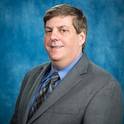- aviation,
- startle,
- surprise,
- pilot performance,
- NASA TLX,
- heart rate
Startle and surprise in the cockpit have contributed to multiple aviation accidents. The aviation safety boards of France, the United States, and Holland have concluded that startle and surprise pose a serious threat to pilots. This study identified the effects startle and surprise had on multi-engine rated pilots. Surprise is defined here as something unexpected (e.g., engine failure). Startle is the associated exaggerated effect of an unexpected condition (e.g., loud bang). At this point, data has been collected on 15 pilots. Pilots were tested in an aviation training device configured to a Cessna 172 and a Beechcraft Baron 58. Each pilot flew the single and multi-engine aircraft in a scenario that induced an informed emergency condition, a surprise uninformed emergency condition, and a startle and surprise uninformed emergency condition for each aircraft. During each condition heart and respiration rate, flight performance, and workload were collected. The startle and surprise condition showed highest respiration for both planes. However, there was no difference for heart rate between the two aircraft for the informed condition, but heart rate was highest in the startle and surprise condition for the twin-engine aircraft when compared to the single-engine aircraft. The temporal demand workload was higher for the twin-engine when compared to the single-engine for the surprise condition only. Performance differences were found, which we think will show significance differences after more data is collected. Potential application of this study will help us understand how pilots will react in various unexpected conditions of different aircraft.
Rahim Agha is a graduate teaching assistant and M.S. in Aeronautics student at ERAU with research interests in aviation human factors, aviation safety, and airport modeling using the Total Airspace and Airport Modeler. Mr. Agha holds a B.S. degree in Mechanical Engineering and his recent research has focused on the effects of startle and surprise on pilots.
Available at: http://works.bepress.com/andy-dattel/41/

Presented during Concurrent Session 6B: Aviation Safety Management Systems